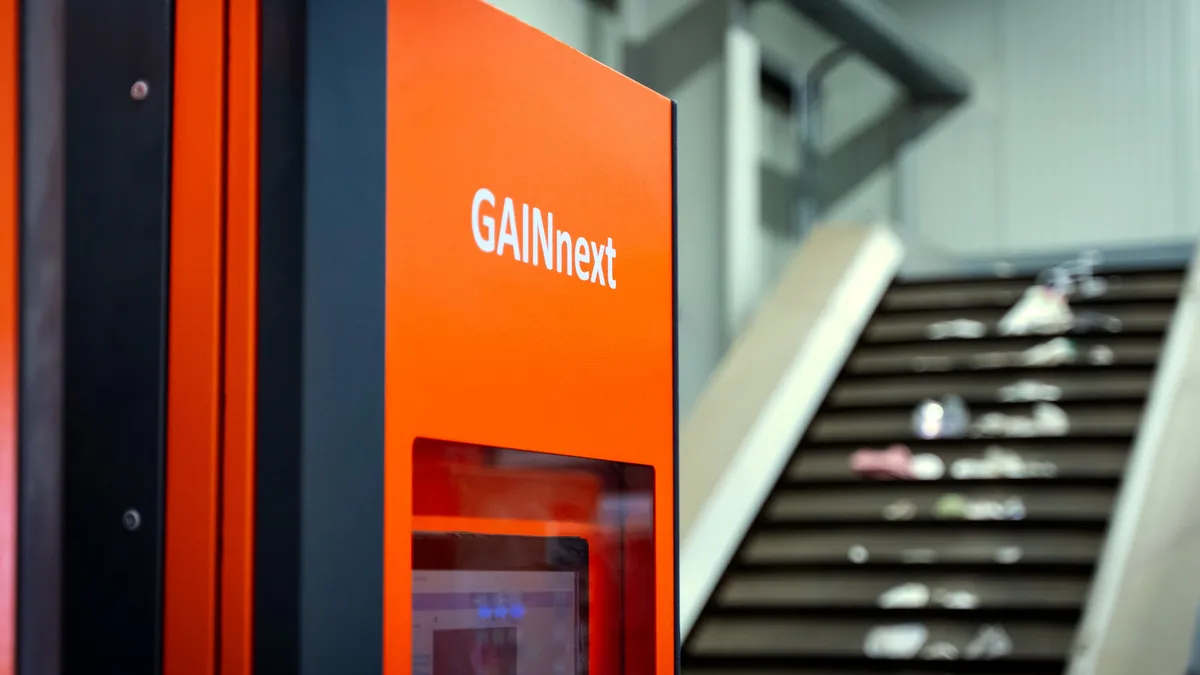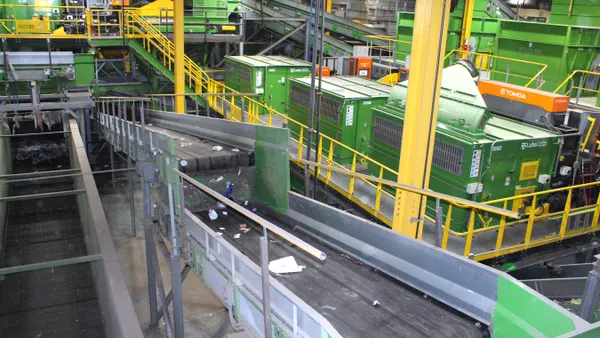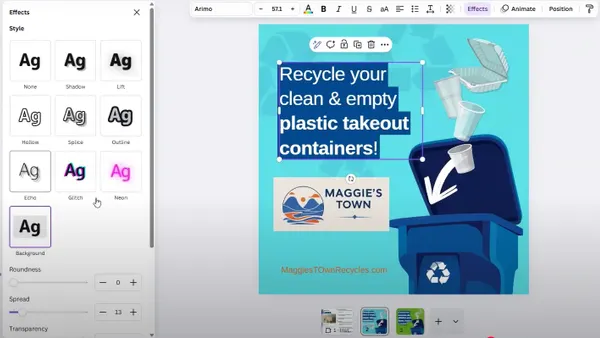Dive Brief:
- Tomra Recycling has added a new used beverage can sorting option to its GainNext equipment, which uses artificial intelligence and machine learning to help recover more cans.
- Tomra’s upgraded sorter, meant to be integrated into a MRF’s existing equipment footprint, uses AI to help detect and eject non-UBC materials such as aluminum bottles and trays or plastics.
- The technology is calibrated to identify packaging streams most commonly found in the Americas, a move meant to help MRFs reduce reliance on manual sorters, particularly at the end of the line. The system can achieve a 98% purity rate, the company says.
Dive Insight:
Numerous players in the recycling industry have invested in UBC-specific recycling efforts in recent years, and Tomra sees its new sorting application as a key part of that trend.
While some MRFs receive grants and loans to improve overall aluminum recovery, groups such as the Can Manufacturers Institute are undergoing a multi-year effort to specifically support efforts to collect more beverage cans from MRFs. That includes programs such as those that finance deals for new AI-powered equipment purchases.
Meanwhile, major aluminum packaging companies, such as Ball, have advocated for “well-designed” recycling policies that help boost UBC recycling rates, including certain extended producer responsibility and bottle bill efforts.
Tomra is one of several MRF equipment companies that have upgraded its AI offerings in recent years in an effort to make sorting faster and yield higher-quality bales of of aluminum and plastics. Glacier Robotics recently announced it had raised $7.7 million and partnered with Amazon to refine its AI-enabled robotic equipment. Earlier this year, Tomra announced it had acquired a 25% stake in PolyPerception, a startup that offers AI-based data monitoring for waste flows.
The sorter uses an RGB camera trained to recognize UBCs based on criteria such as shape, size and dimension, Tomra said in a news release. It “is trained to see what the human eye can see and detects thousands of objects by visual differences in milliseconds,” said Indrajeed Prasad, Tomra’s product manager for deep learning, in the release.

GainNext is also specifically calibrated to better identify objects commonly found in MRFs in the region where it operates, added Ty Rhoad, Tomra Recycling’s vice president of sales for the Americas, in an email. For example, models that operate in the Americas are specifically optimized for packaging from that region, while Tomra’s European-based models are programmed to identify a different mix of packaging, he said.
Rhoad said Tomra’s UBC upgrade is also intended to operate at higher belt speeds because it operates faster than human sorters, who can typically only pick about 60 items a minute. GainNext uses an air ejection system to sort up to 2,000 items per minute.
The deep-learning software can identify overlapping objects to better calculate ejection positioning, which Rhoad said is especially ideal for places where single-stream recycling is common.
Tomra says it’s rolling out other applications for the sorter in the European market, including applications to separate food-grade from non-food-grade PET, PP and HDPE with a 95% purity level, as well as an application to sort PET bottle streams for higher purity levels.
This story first appeared in the Waste Dive: Recycling newsletter. Sign up for the weekly emails here.











